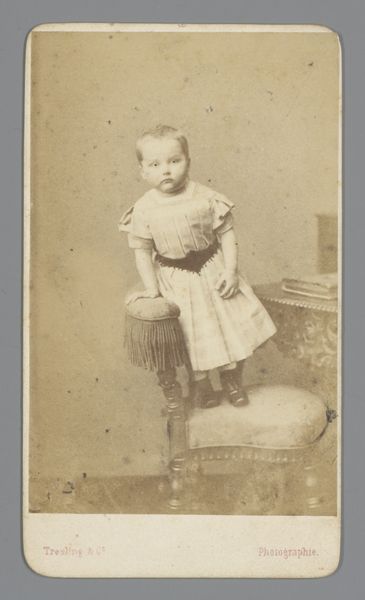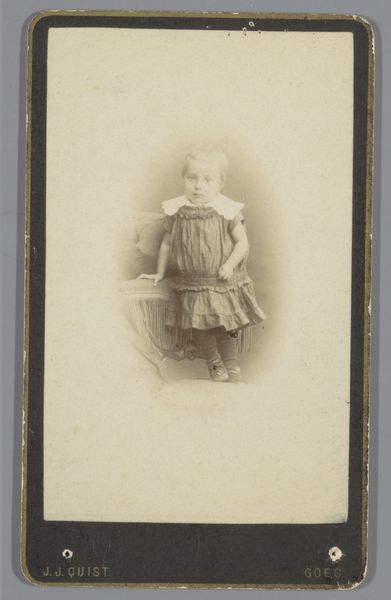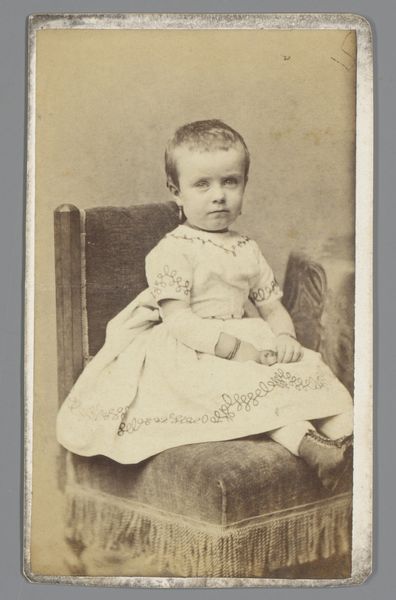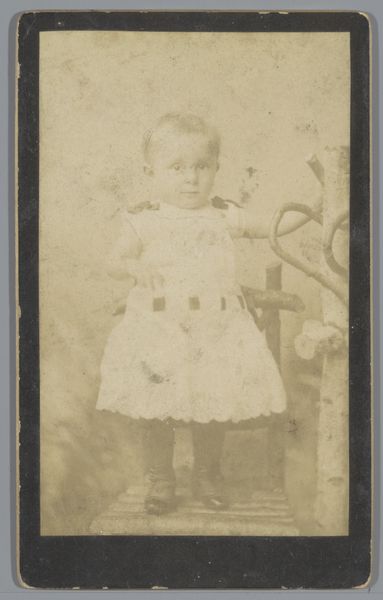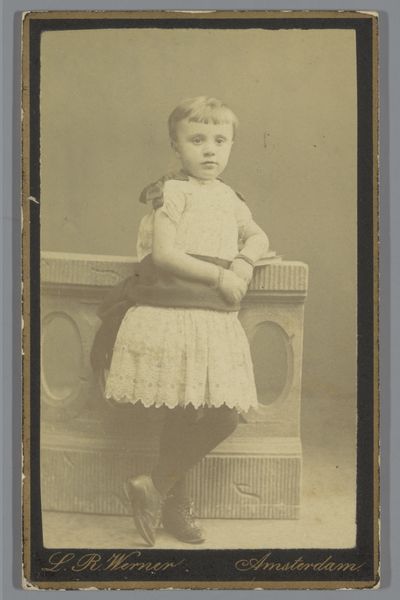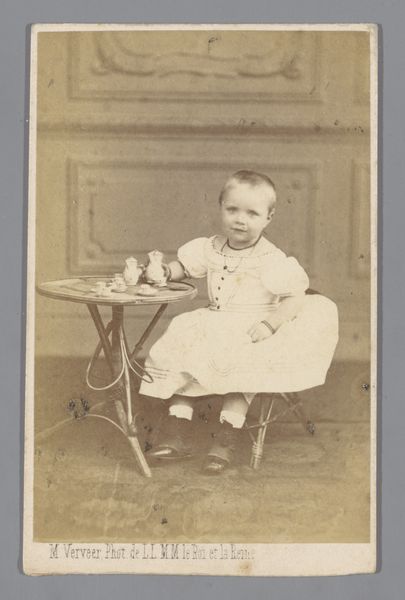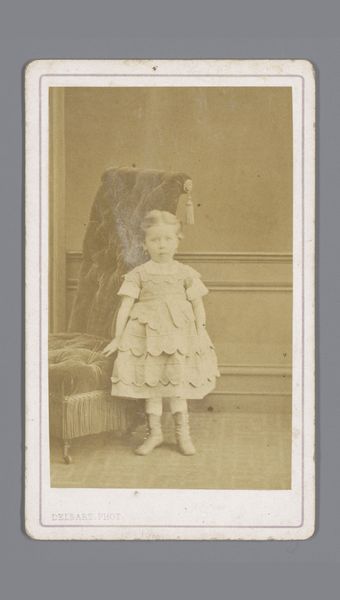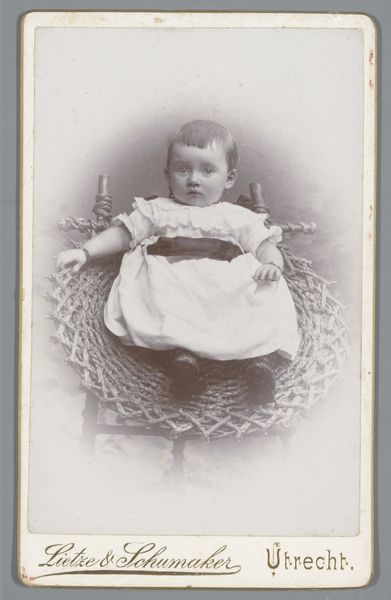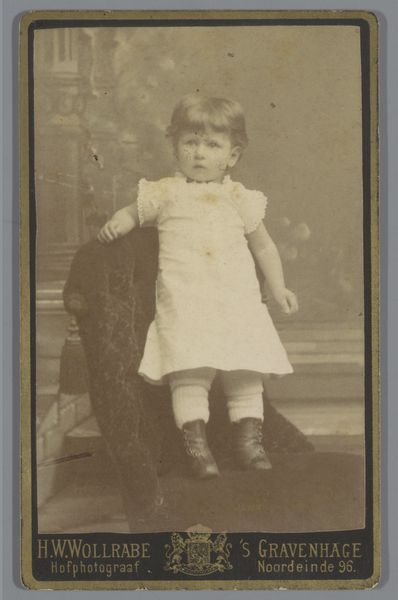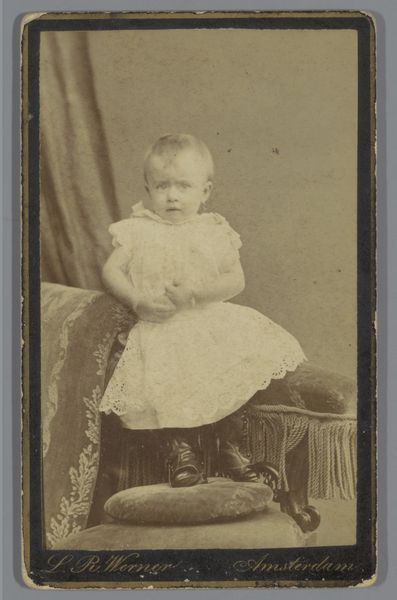
photography
#
photography
#
genre-painting
Dimensions: height 101 mm, width 60 mm
Copyright: Rijks Museum: Open Domain
Curator: Let's take a look at "Portret van een onbekend meisje", or "Portrait of an Unknown Girl," taken between 1863 and 1866 by Auguste Blanche. It's a photograph, a form of genre painting really, with the studio listed at Photo. Anvers. Editor: It’s strikingly somber. The girl's expression feels almost prematurely world-weary for such a young face. The severe composition and the muted tones add to that impression. Curator: Well, we must contextualize it. Photography in the mid-19th century was hardly the snapshot affair of today. It was a process, an event. Think about the socio-economic implications. The child is in her best dress and clearly being presented to society. Editor: Exactly. The black stripes on the dress feel less like playful decoration and more like constraints. Note the way she clasps her hands, it suggests a certain vulnerability. And who decided that presenting girls in this precise way would promote some level of elevated societal standards? What agenda was being pushed? Curator: It highlights, though, the development of the photographic industry at that time. Blanche was running a studio in Antwerp and marketing an idealized image to the burgeoning middle class. Editor: Right, this photograph is not just about preserving a likeness but about participating in a carefully constructed visual language of class and respectability. The absence of any playfulness points to the societal pressures put upon young girls to perform and conform. Who knows if that look of anxiety wasn't simply due to standing so still for the image to come into focus? Curator: And we shouldn’t forget the inherent politics of portraiture. The very act of having one’s image taken, even an anonymous subject, was about affirming a certain social standing and participating in visual culture of the time. Editor: Agreed. The 'unknown girl' stands in for all girls presented, displayed, marketed. There are echoes of power and its performance even here, wouldn't you say? Curator: Definitely. I see this photograph as a time capsule, capturing not just an image of a child but the aspirations and anxieties of a changing society, even the subtle resistance one feels just under the surface of those times. Editor: It reminds us how art can act as a mirror, reflecting both what society wanted to see and what it often chose to ignore. A very profound artifact in that way.
Comments
No comments
Be the first to comment and join the conversation on the ultimate creative platform.
